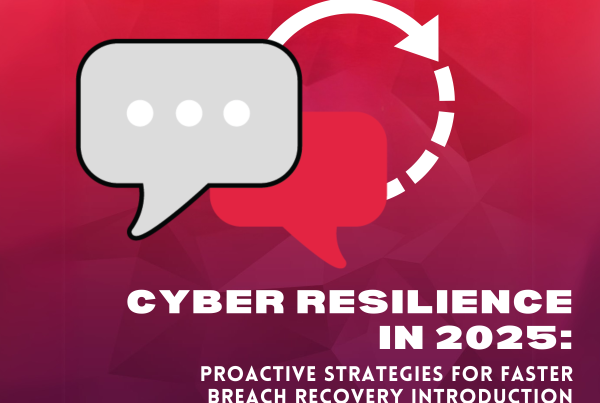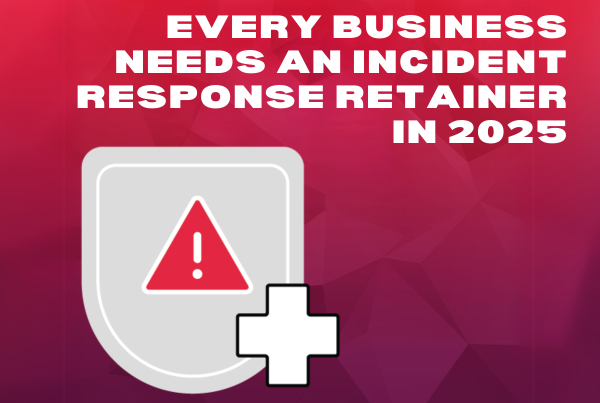A breach in security can be a devastating event for organizations and, unfortunately, is only growing in number. Just this year, large organizations such as Colonial Pipeline, AXA, and T-Mobile experienced cyberattacks that cost millions in damage. According to experts, cybercrime will cost the world $10.5 trillion annually by 2025, illustrating the potential destruction that cyberattacks can create.
Any company is vulnerable to a compromise, even some of the most sophisticated corporations. With the rise of employees working from home, there are new vulnerabilities present for cybercriminals to exploit. That’s why organizations need to be prepared for a breach in security.
How to Handle a Breach
Dealing with a cybersecurity attack can be a difficult task to do. Here are keys points to consider:
- Assess damage
After a company is confident that it has contained the attack, an investigation and assessment on the damage should be done. It is crucial to know what led to the attack to help prevent it from happening again. By understanding the nature of the attack, a company can determine where the vulnerabilities lie in their system, which will help stop similar attacks in the future.
- Identify and stop the attack
Time is of the essence when it comes to cyberattacks. Once an attack is identified, companies need to work fast to contain it. By determining the type of attack that was used, the organization can use the appropriate method on how to stop it. They can start by isolating the systems that were accessed by the attacker and disconnect accounts that are breached, which helps prevent the further spread of the attack. When the attack is contained, the company should use the appropriate course of action to eradicate it.
- Prevent additional data loss
Immediately shut off all affected equipment and closely monitor all entry and exit points. By taking this action, a company can minimize the affected areas and prevent further data loss. Another step to take is to change all login credentials of authorized personnel and check and notify banks to stop transactions.
- Communication
When a breach occurs, a company is not the only one affected by the attack. It is crucial to notify those who are affected by the breach such as customers and third-party organizations. Companies need to be transparent with those affected to be able to take action to prevent any more damage and take responsibility for it.
Companies should also keep an open communication line within their company. At this time, everyone must work together to fix the damages that have been done and take the necessary steps to inform clients, media, and government agencies if necessary.
- Third-party support
A majority of companies need professional help when dealing with a cyberattack. Some companies simply do not have the necessary skills and tools to properly address a breach. There are a lot of factors involved when a breach happens. Depending on the scale of the attack, an investigation can include forensics, information security, operations, human resources, and many more. By utilizing qualified third-party experts, companies can identify the source and extent of the breach, allowing them to deal with it more effectively and appropriately.
In Summary
There are a lot of details and factors involved when a security breach occurs. However, it is clear that having a concrete response plan is a necessity for companies large and small. Everything is online nowadays, creating more vulnerabilities and risks. Having a detailed response plan can help save time and money while mitigating the damage that can be done. Being prepared and having the necessary tools and skills on hand can make a difference when a breach occurs.
About IPV Network
Since 2016, IPV Network has been a trusted partner of leading enterprises in the Philippines. It brings the best-of-breed cybersecurity solutions. IPV network helps businesses identify, protect, detect, respond, and recover from cyber threats. Email us at [email protected] or call (02) 8564 0626 to get your FREE cybersecurity posture assessment!
References:
“DATA BREACH RESPONSE: A GUIDE FOR BUSINESS”. Federal Trade Commission, 3 June 2021, www.ftc.gov/tips-advice/business-center/guidance/data-breach-response-guide-business.
“How to Respond to a Data Breach.” The Hartford, www.thehartford.com/business-insurance/strategy/data-security-breach-insurance/response. Accessed 20 Sept. 2021.
Creasey, Jason. “Cyber Security Incident Response Supplier Selection Guide”. CREST, 2013. CREST Approved. https://crest-approved.org/wp-content/uploads/CSIR-Supplier-Selection-Guide.pdf
Lord, Nate. “Data Breach Experts Share The Most Important Next Step You Should Take After A Data Breach in 2019 & Beyond.” Digital Guardian, 11 Aug. 2020, digitalguardian.com/blog/data-breach-experts-share-most-important-next-step-you-should-take-after-data-breach-2014-2015.
Jelen, Sara. “Top 5 Ways to Handle a Data Breach.” SecurityTrails, 20 Sept. 2021, securitytrails.com/blog/top-5-ways-handle-data-breach.


